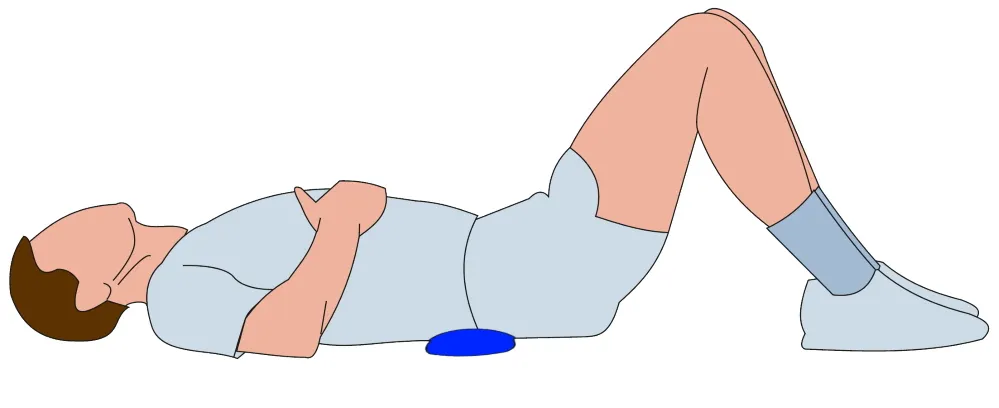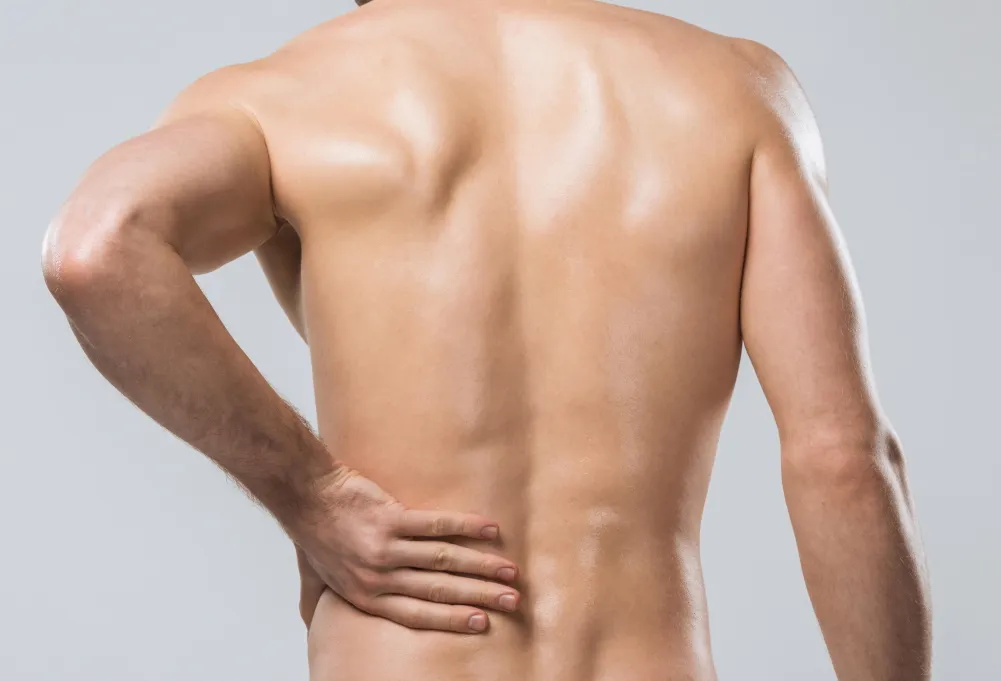You can start self-care for lower back pain (acute or chronic) at home before visiting a doctor or therapist. It includes basic techniques like rest, hot and cold treatment, posture correction, stretching and strengthening exercises. The correct understanding of these techniques is important to get the desired result. Read on to know how and when various self-care techniques can be applied and what impact they have on the paining back.
1. Short Period Rest
Rest helps to reduce the back pain by decreasing the pressure on the inter-vertebral discs and also by decreasing the mechanical stresses that may be irritating the pain receptors. Though 1-2 days of rest is advisable, more than this can be detrimental to the recovery. Too much bed rest can lead to muscle atrophy, cardio-pulmonary de-conditioning, an illness mindset, bone mineral loss and in some cases even blood clots.
The appropriate way to lie down during bed rest is in side lying with upper leg and arm supported on pillows, parallel to the lying down surface, maintaining the natural spinal curves.

If lying on back, try to maintain the lumbar curve by inserting a small rolled towel behind low back, keeping knees slightly bent.

2. Activity Modification
A very good way of staying active and also avoiding low back pain is by doing activities and getting into postures that do not aggravate the pain. For example, if sitting for long hours (e.g. sitting in the office or driving) increases the pain, you can take standing or walking breaks or even do back stretches every 20 minutes. This helps to break the buildup of stress in the back muscles and thus prevents them from going into spasm which lead to back pain. If standing for long hours (doing house chores etc.) is straining the back, you can sit or lie down or do stretches to decrease the stress and thus relieve pain.
3. Heat Therapy
Heat therapy provides pain relief as well as healing benefit in low back pain. Heating dilates the blood vessels of the muscles surrounding the spine. This leads to increased blood flow in this area bringing more nutrients and oxygen, thus speeding up the healing process of damaged tissues.
The plus point of Heat therapy is that it is an inexpensive mode of treatment (You can have it even while taking hot water bath). It can be applied almost anywhere. You can use a hot water bottle while lying down or while sitting you can put hot packs behind your back etc. Portable heating wraps can be carried to the work or while traveling and can be used while sitting. Heat therapy is preferred by many people as it is a non-invasive and non-medicinal form of treatment.
How much heat should be applied to body?
The temperature of the heating source should be enough to reach the muscles. ‘Warm’ is good as it can reach the muscles deeply without burning the skin. ‘Too Hot’ temperature can be uncomfortable to bear and ‘Slightly Warm’ may not reach the deeper muscle layers. The duration of heat application to the affected area depends on the kind of injury. For small tension or little back pain, 15 to 20 minutes of heat application should be good enough to relieve pain. For acute and chronic pain, this duration can be increased to 30 minutes to 2 hours.
While heat therapy is generally considered to be safe, it should not be applied if the lower back is swollen or bruised. In case of any underlying adverse health condition like heart disease, diabetes, skin sensitivity issues, hypertension etc, consult your doctor before heat application. Pregnant females should avoid hot tub or sauna bath. If there is an increase in the swelling of the area due to heat application, immediately stop heat therapy. Consult your doctor if heat therapy is not reducing the pain or stiffness.
4. Cold / Cryotherapy
Cryotherapy is a simple and effective technique which reduces muscle spasm and inflammation in acute phase of injury. It is most beneficial when used within 24 to 48 hours of injury. It is one of the best pain management techniques immediately after the onset of muscle spasm. Icing constricts the blood vessels thus reducing the blood flow in the area where it is applied. This decreases the swelling and inflammation in the affected area. Once the cold application is removed, the blood vessels compensate by over-dilating and thus blood rushes into the area. The infusion of blood in the area brings along with it nutrients, which aid in healing of injured back muscles, ligaments and tendons.
In most of the cases the cause of sudden low back pain is the muscle strain which can occur due to poor posture, sudden bending and lifting of heavy loads, twisting, sudden fall, getting into an awkward position which causes back strain or sports related injury. Applying ice along with short period of rest, pain medications and taking anti-inflammatory drugs, can relieve one from this kind of pain.
The patient should sit or lie down in a comfortable position. To cover the lower back, lying on abdomen with hips slightly flexed (you can place a small pillow under the hips) is the best position as it decreases strain on low back.
Direct application of ice can cause ice burns. Keep moving the ice during ice massage. Never sleep with ice on your skin. If you have an underlying health condition like hypertension, arthritis, skin sensitivity issues, paralysis etc, consult your doctor before ice application.
5. Use of Back Brace
Many types of back braces are available in the market. For low back pain lumbar back brace is the best. Back brace provides extra support to your lower back bones and muscles and limits the movement in the back, thus relieving the pain.
Too much use of back braces should be avoided as it can weaken the muscles and ligaments of that area, thus making spine prone to injuries.
6. Over The Counter Medications (OTC)
Most commonly used OTC medications are:
- Pain Killers: E.g. Paracetamol. Paracetamol works by blocking the pain signals sent to brain.
- NSAIDS (Non-Steroidal Anti-Inflammatory Drugs): E.g. Ibuprofen. These alleviate the pain by reducing the inflammation of swollen nerves and muscles.
Note: Normally self-care with OTC drugs can be done without doctor’s advice. But as with any other medication or treatment, above mentioned treatments and medications may be associated with some side effects. In case the above mentioned treatments do not bring relief within a couple of days or you see any side effects, please consult your doctor immediately. You can book an appointment at Vivacare Advanced Physiotherapy & Pain Clinic. Our specialist doctors also provide online physiotherapy consultation.
The above article is an excerpt from Dr. Monika Chopra’s book, Eliminate your Low Back Pain.

